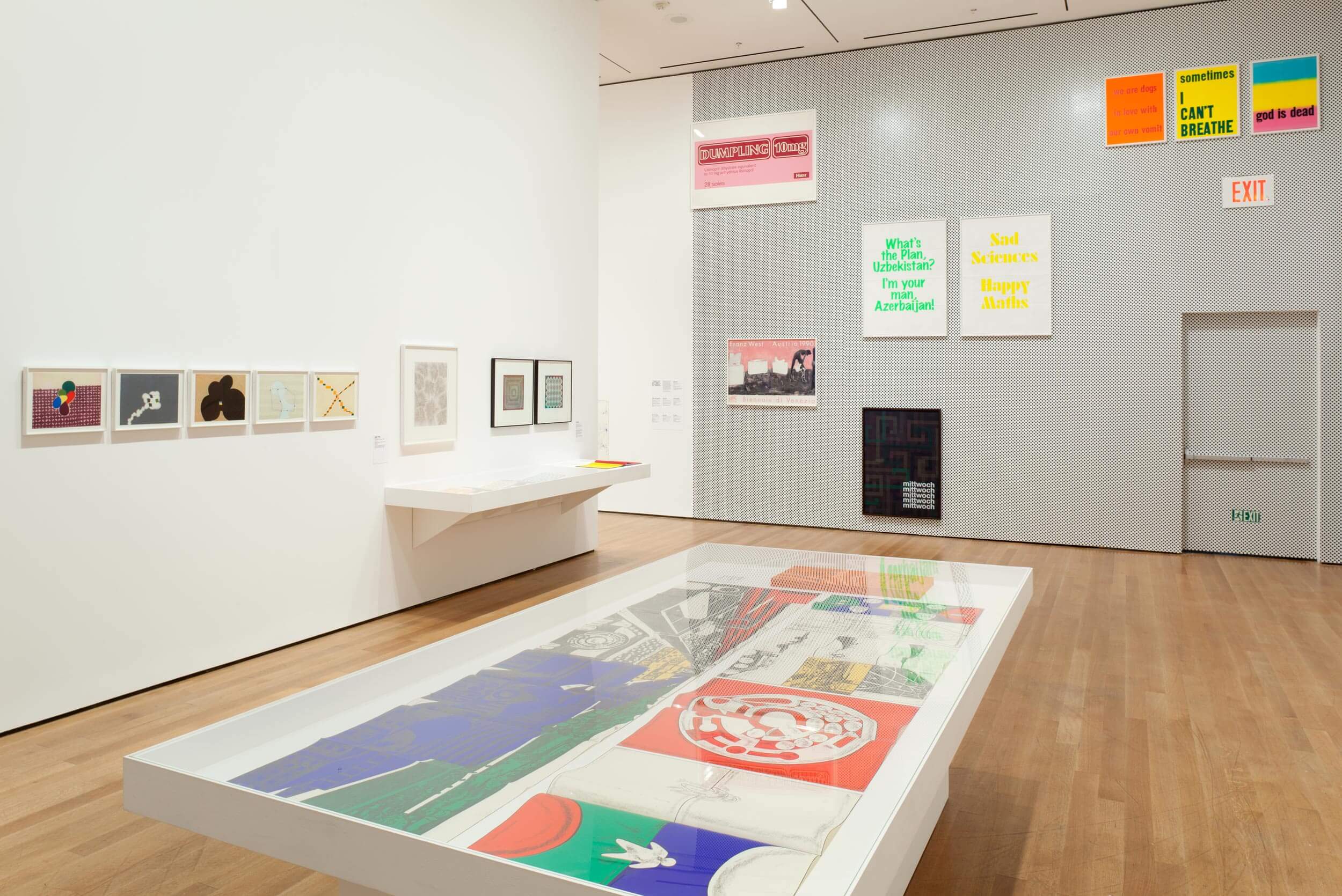

Photos: Thomas Griesel
No longer confined to the traditional print studio, the field of printmaking has in recent years attracted a broad range of artists with a variety of skills, training, and interests, who have taken advantage of new, often highly efficient and user-friendly technologies. Print/Out explores how these artists have integrated the medium’s defining characteristics—reproducibility, collaboration, and ease of circulation—into some of the most innovative art practices of our time.
The earliest works featured in the exhibition coincide with the geopolitical transformations of the late 1980s and early 1990s, an emblematic point of departure in an examination of a medium that, because of its capacity to efficiently disseminate information, has often been linked to social change. Artists’ interventions in newspapers and magazines commissioned by the Vienna-based organization Museum in Progress, influential books by Ai Weiweithat were clandestinely distributed in China, and a billboard project by Felix Gonzalez-Torres (presented in the exhibition and throughout the city) all demonstrate the ability of prints to spread ideas across vast geographies.
For many artists in the last two decades, print has been an ideal medium for experimenting with appropriation and citation, blurring the boundaries between original and copy, real and fake, past and present. A series of screenprints by Martin Kippenberger opens the exhibition (see image at left), illustrating the endless recycling and transfer of motifs that prints make possible. Questioning the nature of copies versus originals, Danish artist group SUPERFLEX presentsCopy Light/Factory, a participatory lamp production workshop in which copies of iconic lamp designs are used to make new originals. Other artists, such as Rirkrit Tiravanija and Philippe Parreno, have used prints to recount, share, or reactivate earlier events and ephemeral artworks. And, today more than ever, artists are combining print techniques with digital technologies to deconstruct and alter images, turning them, as Trisha Donnelly has said of her work, into “a stutter of multiple images.”
Print/Out is divided into sections based on artists, publishers, or themes that represent new directions in the field of printmaking since the early 1990s. In the exhibition galleries, areas of dotted wallpaper punctuate these focused presentations and feature print series that have been broken up and distributed throughout the exhibition. The resulting mix reflects the ubiquity of prints in today’s cultural landscape and attests to the extraordinary vitality of a medium central to contemporary artistic practice.
(Source: MoMA, NY)
Organized by Christophe Cherix, The Abby Aldrich Rockefeller Chief Curator of Prints and Illustrated Books, with Kim Conaty, Curatorial Assistant, Department of Prints and Illustrated Books.
Organized by Christophe Cherix, The Abby Aldrich Rockefeller Chief Curator of Prints and Illustrated Books, with Kim Conaty, Curatorial Assistant, Department of Prints and Illustrated Books.